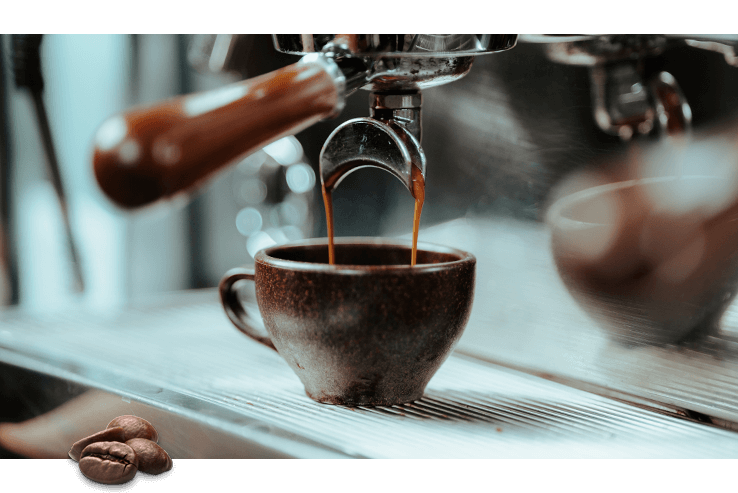Why SOE Single Origin Espresso Is Loved Among Baristas
Why SOE Single Origin Espresso Is Loved Among Baristas
Blog Article
Coffee Beans 101: Every Little Thing You Need to Learn About Espresso and Blended Coffee Beans
When it comes to coffee, understanding the nuances of coffee and combined beans can transform your day-to-day cup. From the growing procedure to roasting techniques, every action plays a role in your coffee experience.
Understanding Coffee Beans: Kinds and Selections
When diving right into the world of coffee, recognizing the types and ranges of coffee beans is vital for every single lover. You'll mostly encounter 2 main varieties: Arabica and Robusta. Arabica beans are recognized for their smooth, complex tastes and lower high levels of caffeine content, making them a favorite among coffee fanatics. On the other hand, Robusta beans load a punch with a more powerful, more bitter taste and higher caffeine levels, frequently made use of in espresso blends.
Within these varieties, you'll find various regional selections, each bringing one-of-a-kind features. Ethiopian Yirgacheffe uses brilliant flower notes, while Colombian beans supply a healthy flavor profile. As you check out, keep in mind to take note of handling methods like cleaned or natural, as they can considerably influence the final preference. By familiarizing yourself with these beans and their tastes, you'll raise your coffee experience and make more enlightened selections in your developing journey.
The Expanding Process: From Seed to Bean
When you explore the journey of coffee, all of it begins with seed selection methods that set the structure for high quality. From there, growing and harvesting play crucial functions in guaranteeing the beans flourish. Finally, processing methods transform those harvested cherries right into the coffee beans you enjoy.
Seed Choice Methods
Selecting the appropriate seeds is vital for creating high-quality coffee beans, as it lays the structure for the whole growing procedure. You ought to start by picking seeds from trustworthy resources that focus on quality and genetic variety. Search for ranges known to flourish in your certain environment and soil conditions. Take note of the seed's age and storage space problems, as fresh seeds tend to sprout far better. When feasible, choose organic seeds to reduce direct exposure to hazardous chemicals. Consider the condition resistance of various selections, as this can greatly influence your return. Ultimately, don't hesitate to talk to local farmers or specialists to acquire insights into the very best seed alternatives for your region. This understanding will certainly enhance your coffee-growing experience.
Cultivation and Harvesting
As you nurture your coffee seeds right into growing plants, understanding the farming and harvesting process is important for accomplishing the most effective flavor and quality. Beginning by planting your seeds in well-draining dirt, ideally in a shaded location to shield them from direct sunshine. As your plants grow, preserve constant wetness, and be mindful of their requirement for nutrients. Prune regularly to advertise air movement and healthy and balanced growth.
Hand-picking is commonly the best approach to ensure just the ripest cherries are selected. Timing is crucial; collecting as well late or too early can influence the flavor account of your beans.

Processing Approaches Explained
As soon as you've gathered your coffee cherries, the next important action is refining them to transform those vivid fruits into the beans you'll make. There are two main methods: the damp process and the dry process. In the completely dry procedure, you spread out the cherries out in the sunlight to completely dry, permitting the fruit to ferment and pass on one-of-a-kind flavors to the beans. On the other hand, the wet process entails eliminating the fruit right away and fermenting the beans in water, resulting in a cleaner taste. After processing, the beans are hulled, arranged, and typically dried once again. Each approach affects the flavor profile, so trying out both can aid you discover your favorite mixture. Understanding these approaches is vital to appreciating your coffee experience.
Roasting Techniques: Just How Flavor Is Established
When it pertains to toasting coffee beans, comprehending roast levels is vital to exposing their distinct tastes. Each roasting strategy impacts the scent and enhances the flavor advancement process, giving you a richer coffee experience. Allow's check out how these factors come together to boost your everyday brew.
Roast Degrees Discussed
Roast levels play an important role in forming the taste profile of your coffee. By comprehending these degrees, you can much better pick a coffee that matches your preference preferences. Experiment with different roasts to find which one resonates with you, boosting your overall coffee experience and pleasure.
Effect on Fragrance
The roast degree not only affects the taste of your coffee but also significantly impacts its scent. When you choose a light roast, you'll typically see bright, floral notes that can make your coffee odor fresh and lively. As the beans dim, the scent changes; a medium roast brings out extra well balanced, caramelized aromas, while a dark roast often tends to feature vibrant, great smoky touches. Each toasting this link technique launches various volatile compounds, shaping how your coffee smells. Additionally, the quality of the beans plays an important duty; freshly baked coffee launches useful source a lot more fragrant oils, improving that enticing scent. So, pay interest to the roast degree-- it's key to exposing the complete aromatic experience of your brew.
Flavor Development Process
As you discover the flavor advancement process, you'll find that roasting strategies play an important function fit the preference account of your coffee. The toasting temperature and time directly influence the level of acidity, sweetness, and resentment of the beans. Light roasts maintain more of the bean's initial tastes, highlighting fruity and flower notes. Medium roasts balance acidity and body, supplying a well-rounded flavor. Dark roasts, on the various other hand, draw out strong, great smoky qualities while lessening the bean's fundamental qualities. Throughout toasting, chain reactions, like the Maillard response and caramelization, transform the beans and enhance their complexity. Exploring with different roasting degrees can assist you discover your perfect brew, so don't think twice to taste and find the abundant spectrum of flavors!
Coffee vs. Blended Coffee: Trick Differences
Coffee and combined coffee each offer one-of-a-kind experiences that cater to different preferences and choices. Espresso is a focused coffee made by forcing warm water through finely-ground coffee beans, resulting in an abundant, bold taste and a velvety layer of crema on top. It's typically delighted in as a shot or made use of as a base for drinks like lattes and coffees.
On the other hand, mixed coffee incorporates various beans from various areas, developing an extra balanced taste profile. You'll this link typically locate blends that highlight sweet taste, acidity, or body, making them flexible for various developing techniques. While espresso concentrates on intensity, combined coffee might use a more comprehensive series of flavors that can transform with each sip.
Inevitably, your selection in between coffee and blended coffee boils down to your personal choice. Whether you hunger for a leisurely cup or a fast jolt, both options have something delicious to provide.

Developing Techniques: Unlocking the Perfect Mug
When it pertains to brewing coffee, finding the right method can transform your experience and elevate your cup. Each developing method has its special appeal and can significantly influence your coffee's taste and scent. For example, making use of a French press enables you to take pleasure in a abundant and robust mixture, while a pour-over approach gives a tidy, bright cup with distinctive flavors.
If you prefer espresso, spending in a quality equipment can assist you grasp the art of pulling shots. For convenience, a single-serve shell system supplies rate without giving up taste.
Don't forget chilly mixture, which supplies a smooth, less acidic coffee suitable for warm days. Experiment with different methods to discover what reverberates with your taste. Each developing strategy opens up a brand-new globe of opportunities, so take the time to explore and find your ideal cup. Happy brewing!
Sampling Notes: Recognizing Flavor Profiles
How can you really appreciate your coffee if you do not recognize what flavors to look for? Sampling notes are your guide to understanding the intricate globe of coffee. Some coffees might leave a chocolatey or caramel aftertaste, while others might have a bright, clean finish.
Think about the body of the coffee, also; is it light and airy or thick and syrupy? Don't neglect acidity; a bright acidity can include vitality, while a reduced acidity might give a smoother experience. By recognizing these flavor profiles, you'll strengthen your connection with each mug, making coffee tasting a fascinating journey of exploration.

Tips for Selecting and Storage Coffee Beans
Choosing and storing coffee beans appropriately can significantly boost your brewing experience. Start by picking premium beans that fit your preference. Search for quality; beans baked within the last two weeks are excellent. Check the roast date on the product packaging, and purchase from regional stores or trusted roasters.
As soon as you have your beans, store them in an impermeable container to stop exposure to air, wetness, and light. A dark, awesome place works best, so avoid maintaining them in the refrigerator or fridge freezer, as this can present moisture. Only grind the amount you require to keep quality; entire beans maintain flavor longer than pre-ground coffee.
Finally, try to use your beans within two to 4 weeks after opening up for peak preference. Following these ideas will certainly guarantee your coffee remains tasty and delightful, elevating your day-to-day mixture to new heights.
Frequently Asked Questions
How Much Time Do Coffee Beans Keep Fresh After Toasting?
Coffee beans stay fresh for about two weeks after toasting - SOE. You must keep them in a closed container, far from light and wetness. After that, their flavor and fragrance begin to decrease considerably

Can I Mix Different Coffee Bean Varieties?
Absolutely, you can blend different coffee bean varieties! Trying out blends can improve flavors and create an unique preference profile. Simply ensure to balance the toughness and characteristics of each selection for the very best outcomes.
What Is the Perfect Grind Size for Espresso?
For coffee, you'll want a fine grind size, concerning the structure of table salt. This enables perfect removal, leading to an abundant, delicious shot. Experiment a bit to locate what fits your preference best!
Exactly How Does Elevation Affect Coffee Bean Flavor?
Elevation affects coffee bean taste by influencing the development price and chemical structure. Greater altitudes lead to slower maturation, which improves acidity and complexity, offering your coffee a vibrant and distinct taste you will not fail to remember.
Are There Decaffeinated Variations of Coffee Beans?
Yes, there are decaffeinated versions of espresso beans. You can take pleasure in a rich espresso flavor without the high levels of caffeine kick. Simply search for "decaf" blends at your regional coffee shop or specialized shop.
Coffee Beans 101: Everything You Need to Know Concerning Coffee and Blended Coffee Beans.
When diving right into the globe of coffee, understanding the kinds and selections of coffee beans is important for every lover.When it comes to toasting coffee beans, understanding roast levels is essential to disclosing their unique flavors. Coffee is a concentrated coffee made by compeling warm water with finely-ground coffee beans, resulting in an abundant, vibrant taste and a luscious layer of crema on top.On the other hand, mixed coffee combines different beans from various regions, developing a more well balanced taste profile.
Report this page